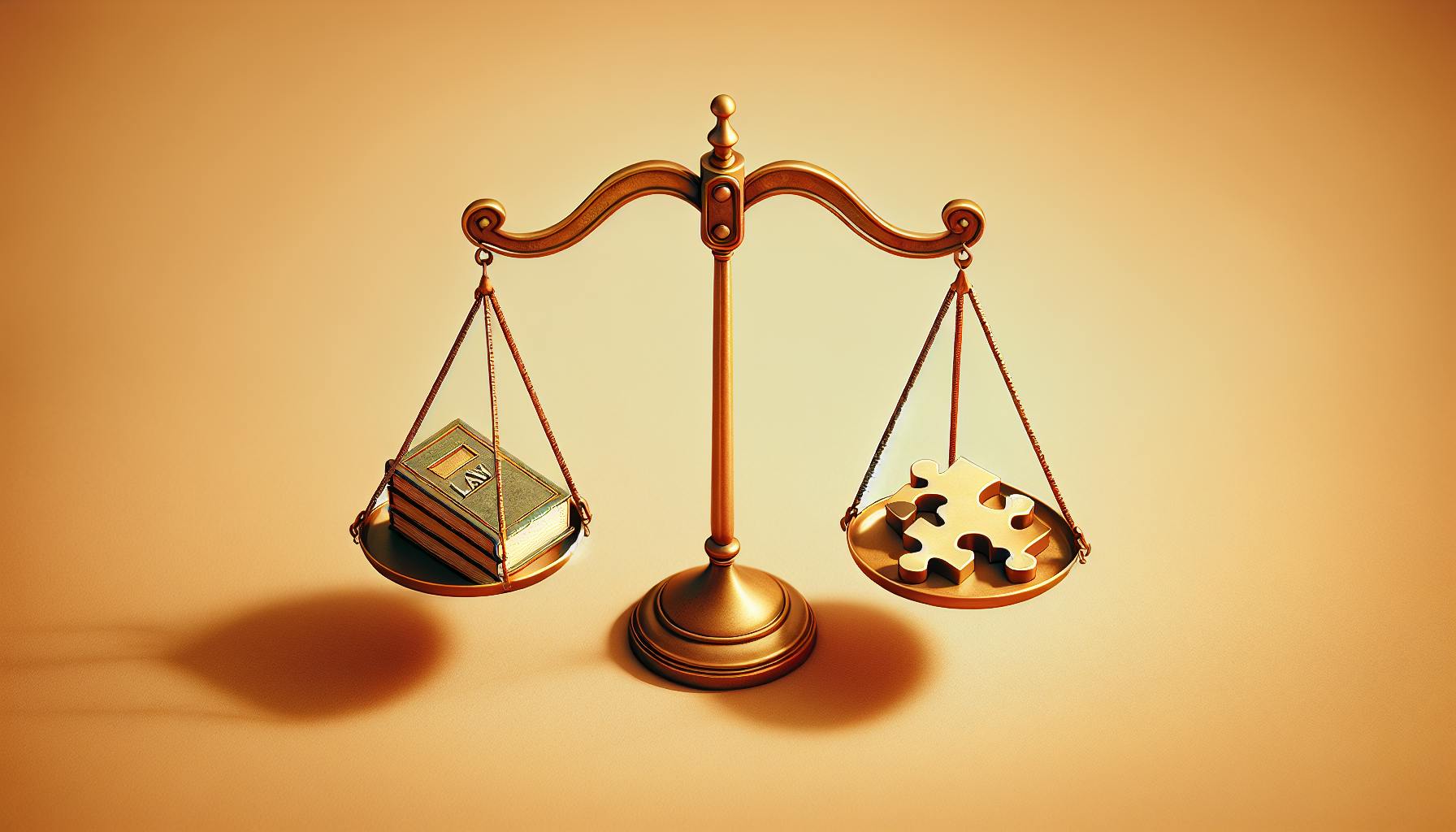Most business owners would agree that protecting personal assets from potential business liabilities is crucial for financial security.
Fortunately, there are several legal structures and asset protection strategies that can shield your personal wealth, including corporations, LLCs, trusts, and more.
In this comprehensive guide, you'll discover the vital role these entities play in insulating assets, the key differences between structures, actionable steps for implementation, and expert advice to fortify your finances against legal judgments.
Safeguarding Your Financial Future
This section provides an overview of how legal structures like corporations, partnerships, and trusts can help protect personal assets from creditors and judgments. It summarizes key points that will be covered in more depth later in the article.
The Importance of Asset Protection
Asset protection is crucial to safeguard your financial future. Legal structures like corporations and trusts shield your assets from creditors, lawsuits, and bankruptcy. They limit your personal liability, protecting your personal assets like your home, retirement accounts, investments, etc. Proper planning ensures you don't lose what you've worked hard to attain.
Objectives and Insights
This article answers:
- How do legal structures protect your assets?
- What are the pros and cons of different legal structures?
- How to choose the right structure for your situation?
It covers concepts like limited liability, charging orders, veil piercing, fraudulent transfers, and discusses structures like corporations, LLCs, partnerships, and trusts in depth.
What business structure protects your personal assets?
Limited liability companies (LLCs) are one of the best business structures for protecting personal assets from business debts and legal liabilities.
Here are some key things to know about how LLCs can help shield your personal assets:
-
Separate legal entity: An LLC is a separate legal entity from its owners. This means if the LLC is sued or goes bankrupt, the owners' personal assets like houses, cars, and bank accounts are generally protected.
-
Flexible structure: LLCs allow for a flexible management structure and ownership stakes compared to corporations. This allows owners to set up the LLC in a way that best protects assets.
-
Personal asset protection: With an LLC, owners are not personally responsible for the entity's debts and liabilities in most cases. This avoids owners having to risk their personal assets if the business struggles.
-
Easy to form and maintain: Forming an LLC is relatively easy and affordable compared to other entities. LLCs also have less complex regulations and record-keeping requirements.
To best shield personal assets, it's critical to properly structure and operate the LLC as a distinct business entity. This includes keeping personal and business finances strictly separate. Consulting a business lawyer can also help ensure your LLC provides maximum asset protection.
What offers protection of personal assets?
Corporations, limited liability companies (LLCs), and limited partnerships can provide protection for owners' personal assets. Here is a brief overview:
Corporations
- C corporations and S corporations limit owners' liability. Shareholders are not personally responsible for any debts or liabilities of the corporation.
- Corporations are separate legal entities from their owners. They can sue and be sued, enter contracts, incur debt, and pay taxes.
- Owners' personal assets are shielded if the corporation faces lawsuits or bankruptcy. However, shareholders can lose their investment in the company.
Limited Liability Companies (LLCs)
- LLCs combine aspects of partnerships and corporations. Owners (called members) are not personally liable for business debts and liabilities.
- LLCs avoid "double taxation" that C corporations face. Profits and losses pass through to members' personal tax returns.
- If an LLC fails, creditors cannot seize members' personal assets like houses, cars, or bank accounts. Members stand to lose their investment in the LLC.
Limited Partnerships
- Limited partnerships have one or more general partners who manage the business and are personally liable. Limited partners invest money but have limited liability and limited control.
- Limited partners' personal assets are typically exempt from partnership debt collection and liability claims. They can lose their investment, but creditors cannot seize personal assets.
In summary, business structures like corporations, LLCs, and limited partnerships help protect owners' personal assets from business-related lawsuits and debts. But owners can still lose the money they invested in the company.
What legal action would protect your personal assets from your business liabilities?
Forming a limited liability company (LLC) is the most effective way to protect your personal assets from business liabilities. An LLC separates your personal assets from the company's assets, so if the business is sued or goes bankrupt, your house, car, personal bank accounts, and other assets are shielded.
Here's a quick overview of how an LLC protects your assets:
-
LLCs are distinct legal entities separate from their owners. The business debts and liabilities belong to the LLC, not you personally.
-
You cannot be held personally liable for the business's debts and liabilities beyond your investment in the LLC. Creditors can seize the LLC's assets but not your personal assets.
-
You have flexibility in how you structure the LLC to obtain liability protection while also getting tax benefits. Popular options include single-member LLCs, multi-member LLCs, and series LLCs.
-
LLC asset protection works by properly following formalities like keeping your personal and business financial accounts separate. This avoids "piercing the corporate veil."
Forming an LLC is easier and cheaper than incorporating. You file articles of organization with your state and create an operating agreement. We recommend consulting business attorneys and accountants to ensure maximum asset protection for your situation.
Overall, LLCs let entrepreneurs separate and protect their personal wealth from the inherent risks of business. By properly structuring your affairs, you can obtain liability protection for your assets as you grow your company.
What is an asset protection structure?
Asset protection structures refer to legal entities that help shield personal assets from potential future creditors or legal judgments. Common structures include corporations, limited liability companies (LLCs), partnerships, and trusts.
Key Benefits
Asset protection structures provide several key benefits:
-
Limit personal liability: They create a legal separation between business assets and personal assets, so personal assets are better protected if the business faces lawsuits or debts.
-
Minimize future risks: Properly structured, these entities make assets more difficult for future creditors to access. This adds a layer of protection.
-
Tax advantages: Many asset protection structures provide tax benefits like pass-through taxation. This can reduce overall tax liability.
-
Estate planning: Structures like trusts allow individuals to pass assets to heirs without probate.
Common Structures
Some common asset protection structures include:
-
LLCs: Offer liability protection and allow pass-through taxation. Single-member LLCs provide limited protection while multi-member LLCs provide greater protection.
-
Corporations: Separate shareholders from company debts and limit shareholder liability. C-corps and S-corps offer different tax treatments.
-
Trusts: Allow assets to be legally owned by a trust rather than an individual. Offers protection, but requires giving up control.
-
Partnerships: Similar to multi-member LLCs in terms of liability protection but subject to different regulations.
Proper setup is crucial to realize the full benefits of these structures. Consulting professionals like attorneys and accountants is highly recommended when establishing an appropriate asset protection structure.
sbb-itb-e93bf99
Navigating Liability and Asset Protection
Inherent Risks and Common Causes of Liability
As a business owner or individual with assets, there are inherent risks that could put your assets at jeopardy in the event of legal liability. Some common scenarios that could create liability include:
- Breaches of contract, failing to deliver goods or services as promised
- Lawsuits from customers, vendors, or other parties
- Creditor actions to collect on debts
- Legal judgments that result in wage garnishment or property liens
If found liable in the above situations, your personal or business assets could potentially be seized, garnished or otherwise impacted. For example, a creditor with a judgment against you could place a lien on your bank account or real estate.
To limit liability risks, proper legal structures and asset protection strategies should be in place.
The Impact of Judgments on Personal and Real Estate Assets
If a legal judgment is rendered against you personally or your business, a number of assets could be impacted if you do not have the proper protections:
Bank Accounts
A creditor can seize funds directly from personal or business bank accounts through a bank levy. This allows them to bypass the need for wage garnishment.
Investment Accounts
Accounts holding stocks, bonds, mutual funds and other securities may be liquidated to fulfill a judgment.
Personal Property
Items like cars, jewelry, art, collectibles and other valuables may be forcibly sold or seized.
Real Estate
Judgment creditors can place a lien on any real property you own, then force a sale to access equity. This impacts rental income properties, primary residences, vacation homes and commercial buildings.
Wages
A percentage of your wages could be garnished until the balance of the judgment is paid off. This impacts take-home income.
As you can see, a wide range of assets are vulnerable without the proper legal protections in place. Forming entities like corporations and LLCs can shield personal assets. Additional strategies like trusts and offshore accounts also provide extra layers of protection.
Incorporating to Protect Personal Assets
How to Become a Corporation: Articles of Incorporation
The first step in forming a corporation is to file articles of incorporation with the state. This document outlines key details about the corporation, including its name, purpose, number and type of shares, registered agent, and incorporator details.
When drafting articles of incorporation, business owners should consult an attorney to ensure proper protections are in place. Key elements to define include:
- Classifications of shares - Common or preferred
- Number of authorized shares
- Shareholder voting rights
- Director and officer roles
- Indemnification clauses
Filing the articles of incorporation creates a separate legal entity and shields owners from personal liability. However, proper corporate governance is vital - failing to follow formalities like holding shareholder meetings can put the corporate veil at risk.
C Corporation and S Corporation: Eligibility and Criteria
A C corporation offers limited liability but is subject to double taxation. Profits face corporate income tax, and shareholders also pay personal tax on dividends.
An S corporation offers pass-through taxation - profits and losses pass to shareholders and avoid double tax. To qualify, S corps must:
- Have 100 or fewer shareholders
- Have only one class of stock
- Have shareholders who are U.S. citizens or residents
- Be a domestic business entity
S corps lack flexibility for selling shares publicly and issuing different share classes. C corps allow greater flexibility but higher taxes. Weighing factors like shareholder goals, profit projections, and exit plans can help determine if a C corp or S corp better meets asset protection needs.
The Shield of Limited Liability Companies (LLCs)
LLC Asset Protection Strategy: A Safe Haven for Business Assets
Limited liability companies (LLCs) offer business owners several key advantages when it comes to shielding personal assets:
-
Limited liability protection: LLCs help create separation between business and personal assets. Generally, members are not personally liable for business debts and liabilities.
-
Flexible management structure: LLCs allow members to customize management and operations based on needs.
-
Pass-through taxation: Most LLCs are taxed as partnerships. Profits/losses pass through to members' personal tax returns.
Overall, LLCs provide inherent protections for personal assets not offered with sole proprietorships or partnerships. Forming an LLC can limit exposure of personal wealth if the business faces lawsuits, bankruptcy or other financial issues.
Starting an LLC: A Step-by-Step Guide
Follow these key steps when starting an LLC for asset protection purposes:
-
Choose a business name - Make it distinct and available in your state.
-
File formation documents - Submit articles of organization to your state. Appoint a registered agent.
-
Create an operating agreement - This document outlines financial/functional details.
-
Obtain licenses and permits - Research requirements based on your business activities and location.
-
Open a business bank account - Helps track finances and further separates business and personal assets.
-
Understand tax obligations - Most LLCs file taxes as partnerships. Members report profit/loss on personal returns.
Starting an LLC takes planning but can provide invaluable protection. Consult professionals like business lawyers or accountants for guidance tailored to your situation.
Trusts as a Fortress for Safe Assets
Trusts can be effective tools for protecting assets from creditors and judgments. Key types of trusts that offer robust asset protection include living trusts, irrevocable trusts, and spendthrift trusts.
Understanding Trusts: Trustor, Trustee, and Beneficiary Roles
A trust involves three main parties - the trustor/grantor who forms the trust and transfers assets into it, the trustee who manages the assets, and the beneficiaries who receive benefits from the assets.
Trusts are created via legal trust documents outlining distribution instructions. The assets transferred to a trust are controlled by the trustee per the trust terms. This structure legally separates trust assets from the trustor's personal assets.
Crucially, trust assets do not belong to the trustor anymore and cannot be easily seized by creditors, supporting asset protection. The extent of protection afforded depends on factors like trust type.
Living Trusts and Irrevocable Trusts: Choosing Your Asset Protection Instruments
Living trusts allow the trustor to control assets while living. The assets avoid probate on death and pass to beneficiaries privately per the trust terms. While offering some protection, living trusts assets are still vulnerable to lawsuits against the trustor.
Irrevocable trusts offer the strongest asset protection as the trustor gives up control over assets transferred. This prevents courts from forcing distributions back to the trustor. The assets are permanently owned by the trust and managed by the trustee for the beneficiaries. Creditors generally cannot access or seize these assets.
Choosing between living vs. irrevocable trusts depends on one's goals. Living trusts support estate planning while allowing access to assets. Irrevocable trusts better shield assets but mean loss of control. Overall, trusts can powerfully guard assets from creditors when set up correctly.
Leveraging Partnerships and Insurance for Asset Protection
Partnerships and insurance can also help shield personal assets, when structured properly.
General Partnership vs. Limited Partnership: Understanding Liability
A general partnership offers no liability protection - all partners share unlimited personal liability for debts and obligations. A limited partnership has both general and limited partners. General partners manage the business and have unlimited personal liability. Limited partners are passive investors with no role in managing the business, and thus have limited liability based on their level of investment.
Forming a limited partnership enables passive investors to reap returns without worrying about losing personal assets beyond their initial investment. The general partners assume higher risk but have greater control in running the operations. Understanding these dynamics is key for small business owners seeking asset protection alongside investment partnerships.
Insurance as a Defensive Barrier Against Garnishment
Businesses should strongly consider insurance policies and bonds as a defensive barrier against liability claims. General liability insurance helps cover injuries, property damage, personal injuries, medical expenses, attorney fees, and settlement costs - protecting business assets and personal assets of owners. Professional liability insurance helps shield against claims of professional negligence, errors, omissions resulting in client damages.
Product liability insurance reduces financial risks involved in manufacturing, selling or distributing products that could potentially harm consumers due to defects or poor warning labels. Directors & officers (D&O) liability insurance helps indemnify corporate directors and officers from personal liability associated with their managerial decisions and actions.
Having adequate insurance coverage limits risks of garnishment against business assets and personal assets of owners, should claims arise under premises liability, product liability, professional errors & omissions, etc. The premium costs are well worth it for strengthening the defensive barrier around assets.
Conclusion: Building a Wall Around Your Wealth
Recap: The Pillars of Asset & Liability Management
-
Properly structuring your assets using entities like corporations, LLCs, partnerships, and trusts can help protect them from creditors and judgments.
-
Each legal structure has its own pros, cons, tax implications, and liability protections that must be considered with the guidance of legal and financial professionals.
-
No single structure is right for everyone - it depends on your personal financial situation, business activities, asset types, and risk tolerance.
-
Ongoing asset & liability management with accounting, legal, insurance, and financial professionals is key to optimizing protections.
Final Recommendations: Consult a Financial Advisor or CPA
Before settling on any legal structure or asset protection strategy, it is wise to consult with professionals like CPAs and financial advisors who specialize in this area. They can objectively assess your situation and provide personalized advice on:
-
The best entities and ownership structures for your assets and business activities.
-
Tax planning, liability risks, and insurance needs.
-
Customizing real estate, trust, and other asset protection strategies to your situation.
-
Developing an comprehensive asset & liability management plan aligned to your goals.
Their guidance can save you time, money, and headaches in both the short and long-term as your needs and situation evolves. Like any complex financial matter, professional expertise is the best path to effective solutions.


